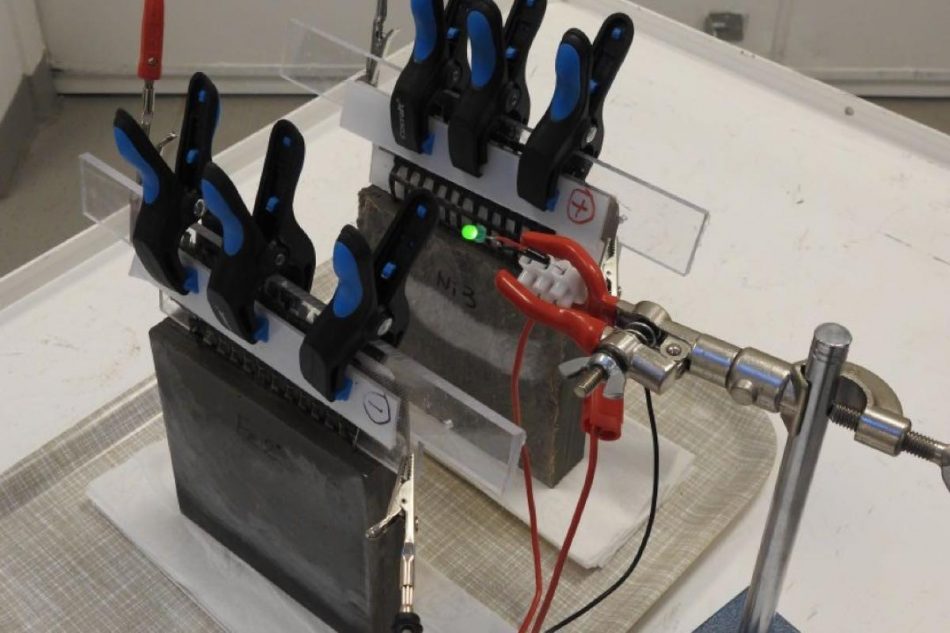According to the World Green Building Council, about 11 percent of the environmental footprint of buildings and construction comes from embodied carbon emissions. This includes all the CO2 emitted in producing the materials needed for creating our built environment.
Seeking more sustainable and scalable materials, a team of experts has come together to develop the world’s first rechargeable cement-based battery — all in a bid to have a multi-story building that could store energy in its own structure, just like a battery.
Developed by researchers Emma Zhang and Luping Tang, the concept involves first a cement-based mixture, with small amounts of short carbon fibers. The mixture is then supplemented with a metal-coated carbon-fiber mesh — iron for the anode, and nickel for the cathode. The resulting product is a rechargeable battery with an average density of 7-watts per square meter.
As explained by designboom, although the battery’s energy density remains low compared to commercial batteries, the volume of concrete would still make it possible to produce a significant amount of energy.
One of the most attractive features of the battery is the fact that it is rechargeable, allowing for different kinds of applications, including storing energy or becoming an energy source itself to power various systems like remote monitoring.
In fact, “the battery can be connected to solar panels and become the power source for monitors on highways and bridges, for example, where the sensors detect cracks or corrosion,” explains Zhang.
Image source: Chalmers University of Technology











